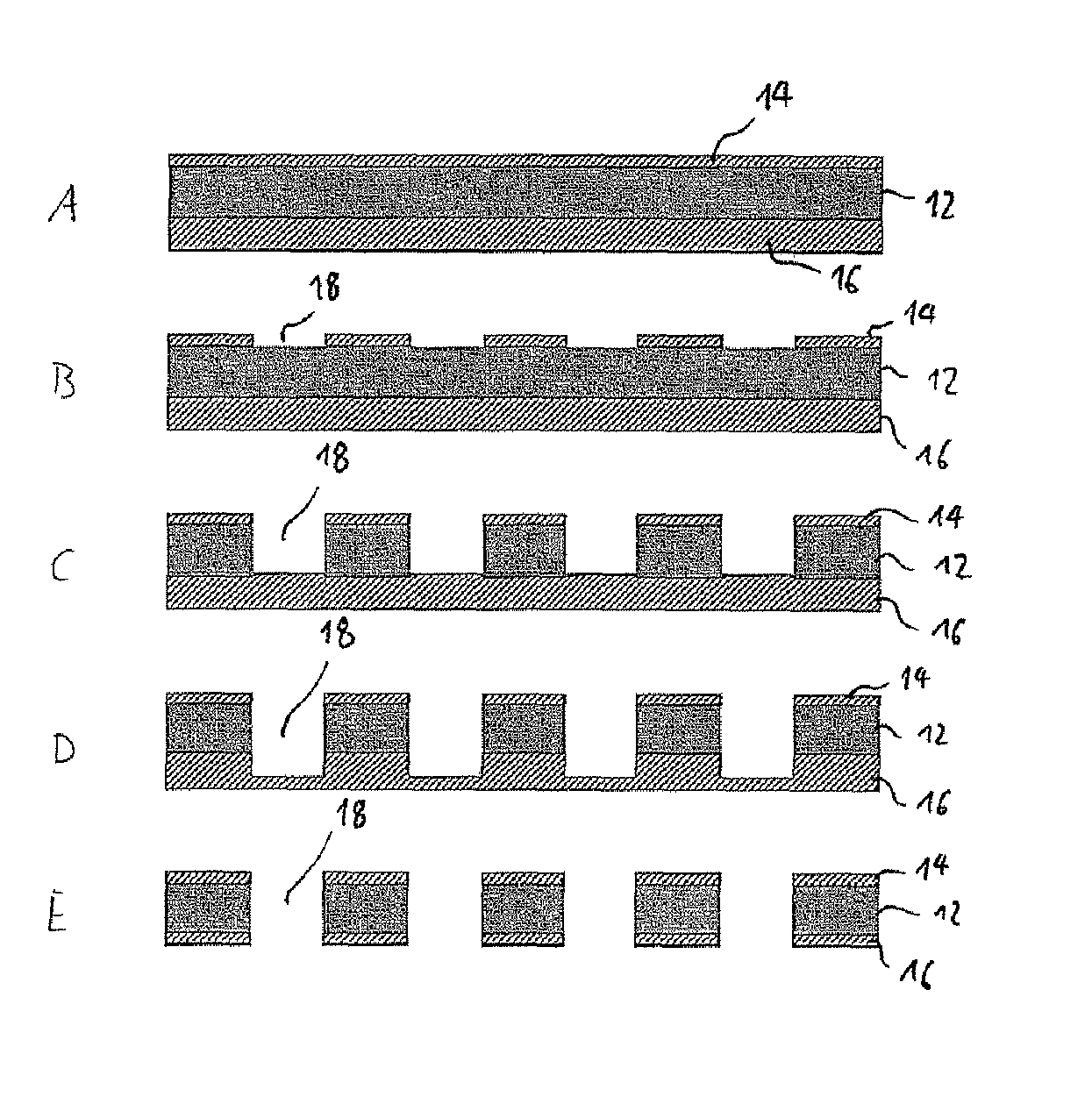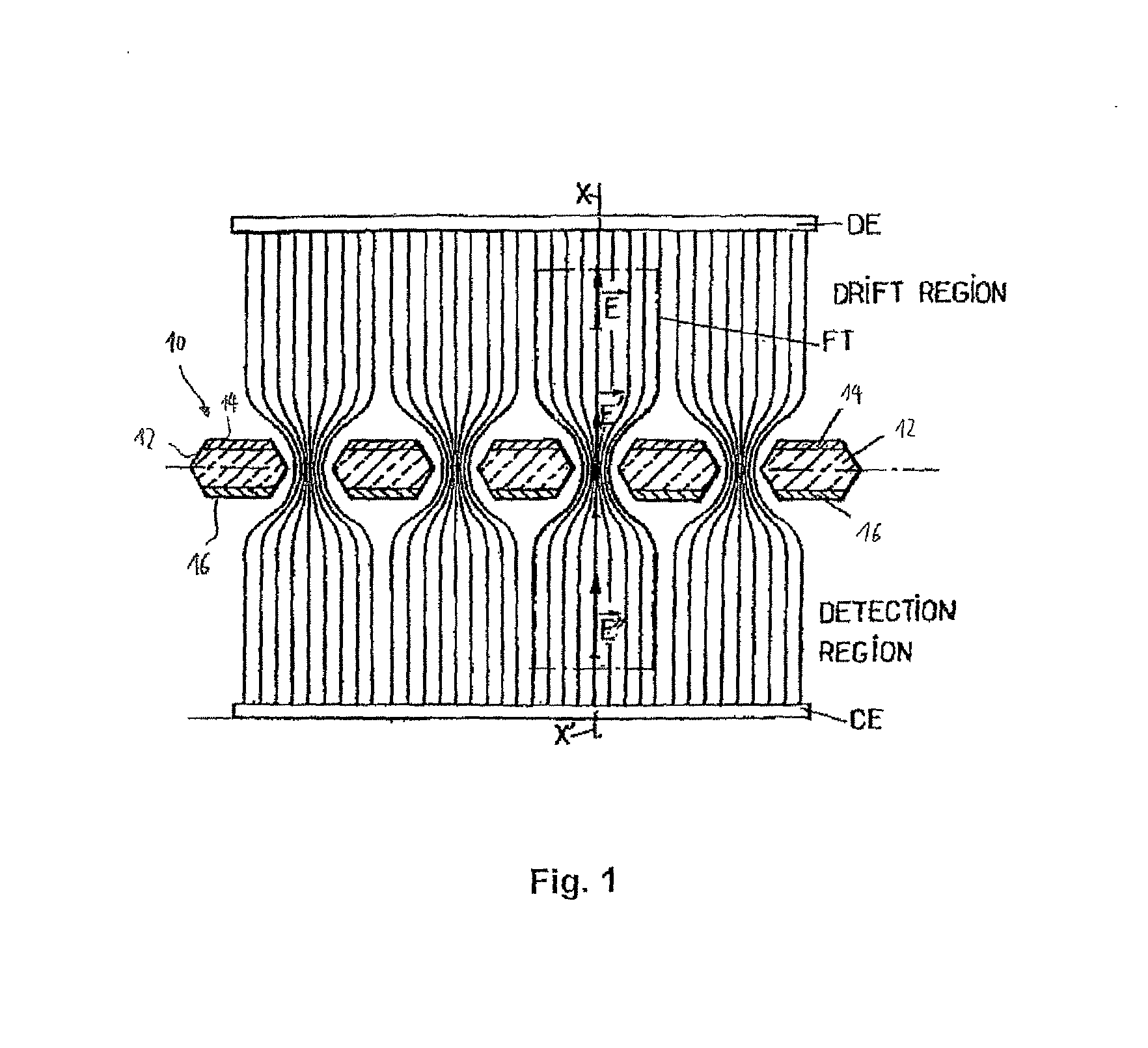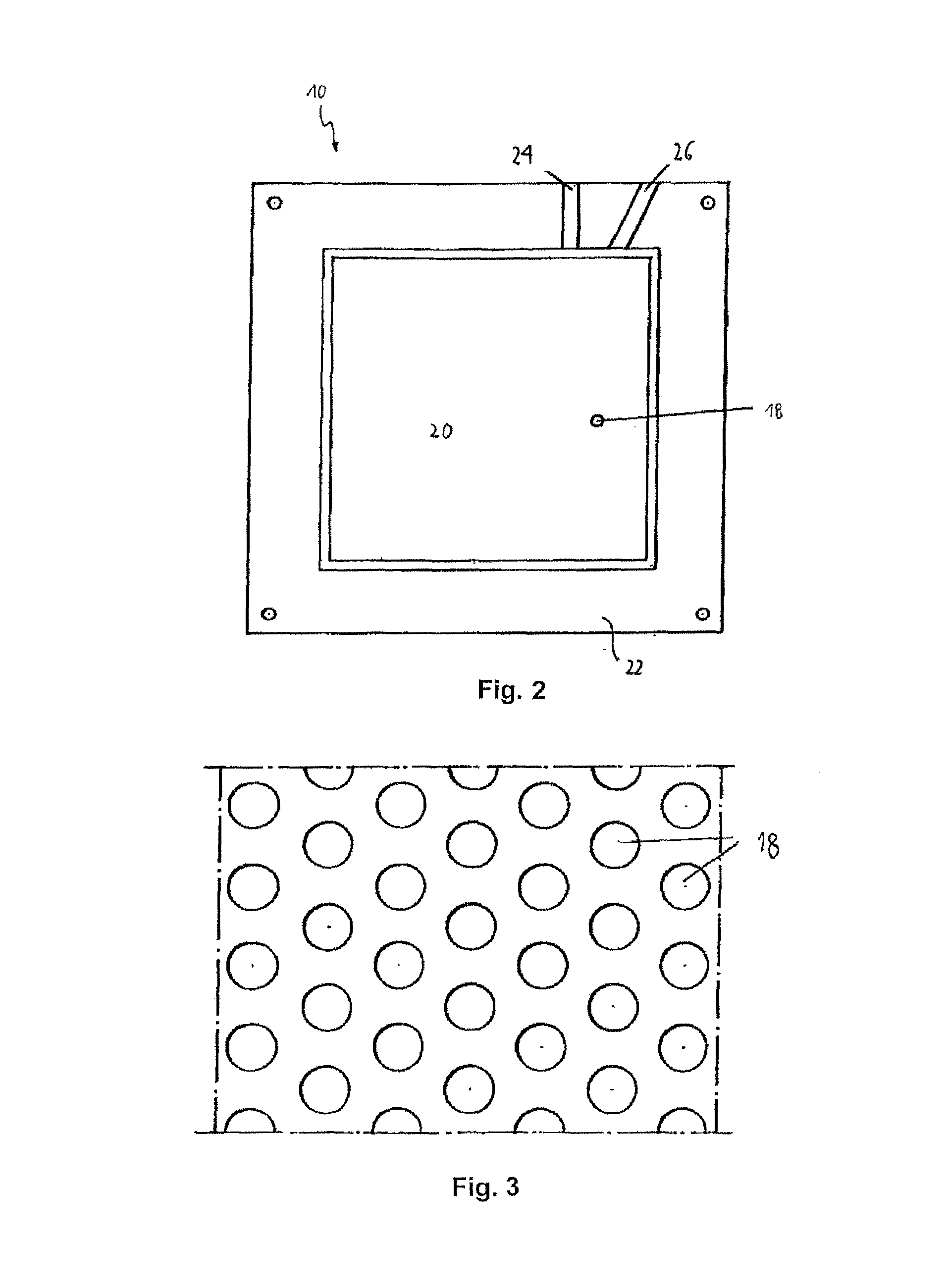Method of manufacturing a gas electron multiplier
a technology of electron multiplier and gas, which is applied in the manufacture of cables/conductor parts, electrical-based machining equipment, electrical apparatus, etc., can solve the problems of difficult to ensure a proper co-registering of patterns on both sides of the blank, the film on which the masks were printed was not stable enough to guarantee a precise alignment, etc., and achieves the effect of improving the performance of the devi
- Summary
- Abstract
- Description
- Claims
- Application Information
AI Technical Summary
Benefits of technology
Problems solved by technology
Method used
Image
Examples
second embodiment
[0053]Next, a second embodiment of the invention is described with reference to FIG. 5. As is seen in panel A of FIG. 5, again a blank sheet 28 is prepared having a polyimide insulating layer 12 and first and second copper layers 14, 16 on top of its first and second surfaces. However, in this case, the blank 28 is prepared such that the second copper layer 16 is thicker than the first copper layer 14. In the example shown, the first copper layer 14 is 5 μm thick and the second copper layer 16 is 15 μm thick. Such a blank 28 can be prepared by electrolytically adding 10 μm of copper to the second metal layer 16 of an original blank (not shown) having 5 μm of copper cladding on each side.
[0054]The patterning of the first copper layer 14 and the underlying chromium layer is performed similarly as described in section 1.1. above and shall not be repeated here. Panel B of FIG. 5 shows the blank sheet 28 after patterning, where in contrast to FIG. 4, the formation of four holes is depict...
PUM
| Property | Measurement | Unit |
|---|---|---|
| thickness | aaaaa | aaaaa |
| thickness | aaaaa | aaaaa |
| thicknesses | aaaaa | aaaaa |
Abstract
Description
Claims
Application Information
 Login to View More
Login to View More - R&D
- Intellectual Property
- Life Sciences
- Materials
- Tech Scout
- Unparalleled Data Quality
- Higher Quality Content
- 60% Fewer Hallucinations
Browse by: Latest US Patents, China's latest patents, Technical Efficacy Thesaurus, Application Domain, Technology Topic, Popular Technical Reports.
© 2025 PatSnap. All rights reserved.Legal|Privacy policy|Modern Slavery Act Transparency Statement|Sitemap|About US| Contact US: help@patsnap.com



